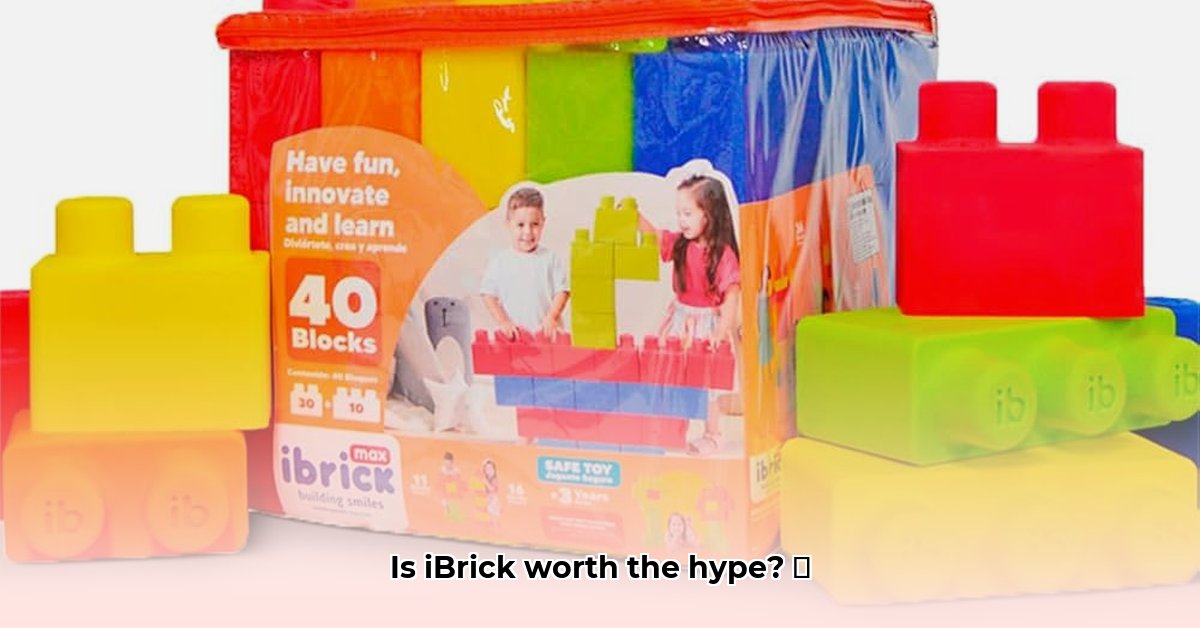
What is iBrick?
iBrick is a LEGO-compatible STEM subscription box service designed to provide children with engaging building projects that blend hands-on construction with digital interaction. The service aims to foster creativity and STEM learning through monthly deliveries of LEGO-compatible bricks and access to digital building instructions. The target audience appears to be parents seeking enriching and educational activities for their children. However, crucial details such as specific age ranges and pricing remain unclear on their website.
The Good, the Bad, and the Uncertain
iBrick presents a potentially appealing concept. However, the lack of readily available information makes a complete assessment challenging.
Positive Aspects:
- LEGO Compatibility: The use of LEGO-compatible bricks is a significant advantage, reducing any learning curve and fostering immediate engagement for children familiar with LEGO.
- Digital Design Integration: The inclusion of digital building instructions suggests a potentially wide variety of models and builds, promising sustained interest and creative possibilities.
- Potential Educational Value: iBrick mentions collaboration with child development specialists; this suggests a focus on age-appropriate design and genuine educational benefits. However, the specifics of this educational approach are not detailed.
Challenges and Concerns:
- Limited Transparency: Key information such as pricing, the number of digital designs available, and the specific age range remains conspicuously absent from their website. This lack of transparency hinders a thorough evaluation.
- Absence of Independent Reviews: The absence of independent user reviews is a major drawback. Without real-world feedback from parents and children, assessing the actual user experience, long-term engagement, and the overall educational value remains impossible.
- Unclear Value Proposition: Without knowing the price and the depth and breadth of the designs, it's difficult to compare iBrick's value to purchasing LEGO sets directly or subscribing to other STEM-focused subscription boxes.
A User's Perspective (Simulated)
Imagine a child receiving their first iBrick kit. The initial thrill of opening the box and discovering the LEGO-compatible bricks is likely significant. The child might immediately engage with building a model using the provided digital instructions. However, the long-term appeal depends on several factors: the variety and complexity of the available designs, the quality of the digital interface, and the overall educational value of the construction activities. Without independent user feedback, we can only speculate on whether this initial excitement will translate into sustained engagement.
Value Proposition and Comparison
iBrick faces stiff competition from established players in the STEM toy and subscription box market. While the LEGO compatibility is a strong point, its value proposition hinges on transparent pricing, a wide range of engaging digital models, and clear evidence of its educational value. Currently, the lack of this information prevents a robust comparison with competitors such as LEGO Education and other STEM subscription services.
Conclusion and Recommendations
iBrick's concept is intriguing, but its execution remains largely unknown due to a lack of independent reviews and transparent information. The LEGO compatibility and integrated digital designs suggest potential, but definitive assessment is impossible without a more comprehensive look at the product's features, its cost, and real-world user experiences. While the potential for a fun and educational experience exists, it's wise to approach iBrick with caution until more data becomes available. A wait-and-see approach is recommended. Independent user reviews would significantly improve transparency and allow for a more informed recommendation.